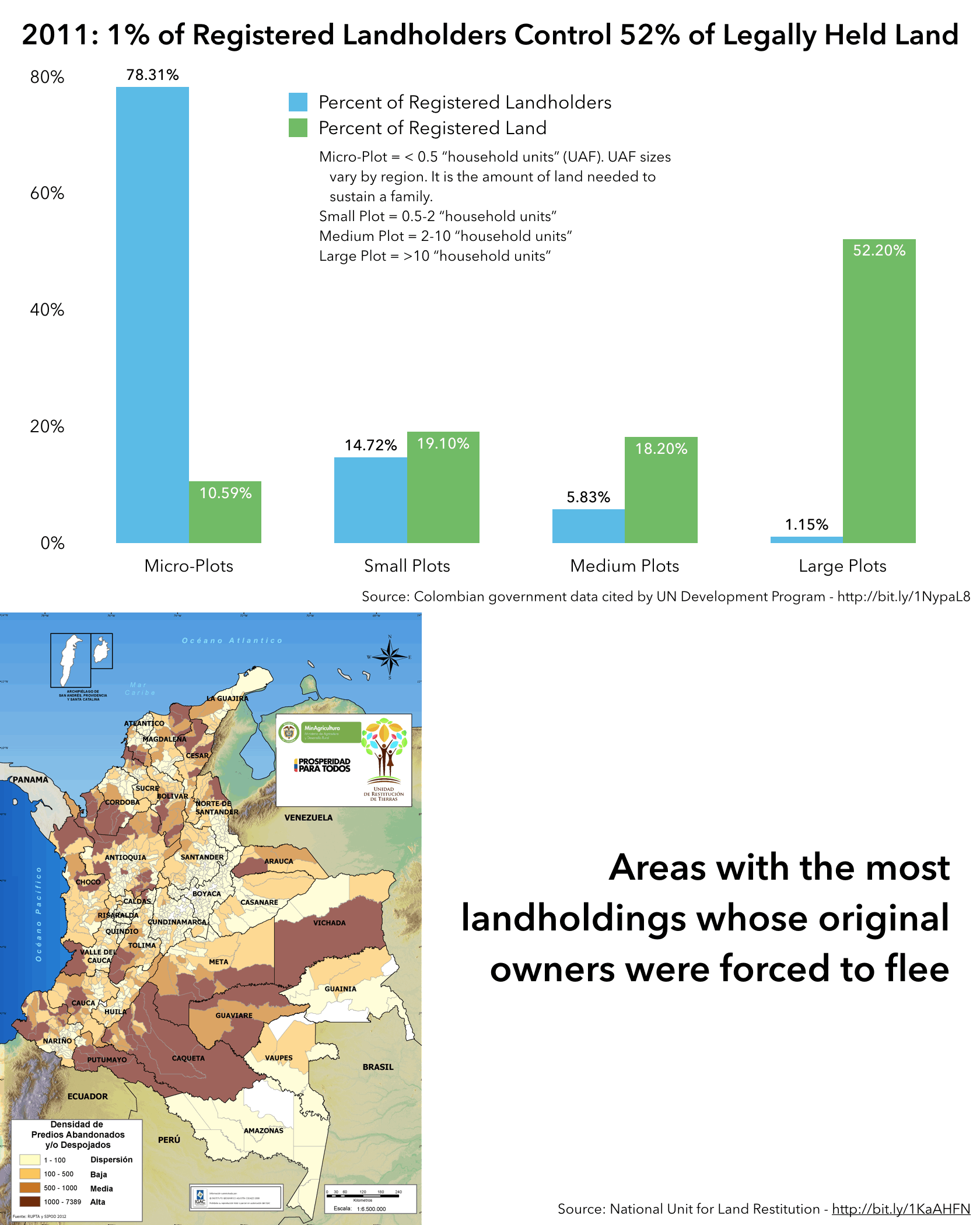Land Tenure
It is common to hear analysts contend that access to land underlies much of Colombia’s conflict. Indeed, land distribution in the Colombian countryside is among the most lopsided on the planet. The armed conflict made the problem worse, as armed groups, often in collusion with unscrupulous businesspeople and narcotraffickers, dispossessed hundreds of thousands of small landholders. Approximately 6.6 million hectares—about 15 percent of Colombia’s farmland—were stolen or forcibly abandoned since the early 1990s.
In 2011, a new Victims and Land Restitution Law created a Land Restitution Unit in the Agriculture Ministry and charged it with returning about 2 million hectares of stolen land. The restitution process faces resistance from current landowners in many areas, who have mounted legal challenges, and in some cases have employed threats and intimidation. The central government’s ability to confront powerful local landholders, many of whom have great influence in Bogotá political spheres, remains largely untested.
(Text continues below the infographic)

Largely due to public security concerns, restitution has barely begun in many of the areas of greatest dispossession. As of January 2016, about 180,000 hectares have received “restitution sentences” through this process. It is not clear how many of these original proprietors have actually returned to their land.
The draft FARC-government peace accord on “integral development policy,” signed in 2013, would not redistribute land. However, it would accelerate restitution and formalization of small landholdings, while adopting several strategies to promote small-scale agriculture, including the likely establishment of several “peasant reserve” zones where land concentration would be illegal.
 15
15